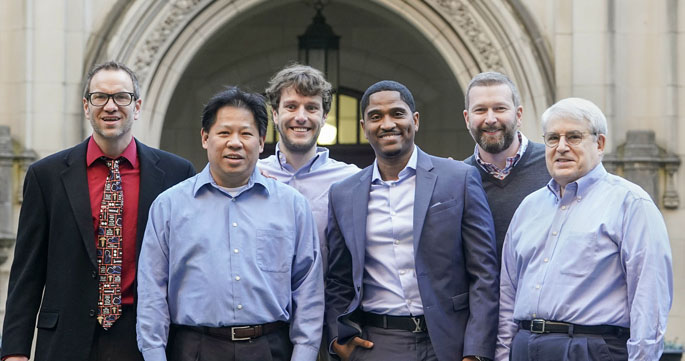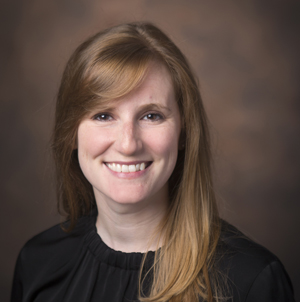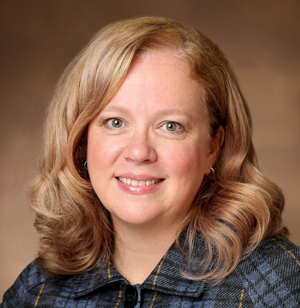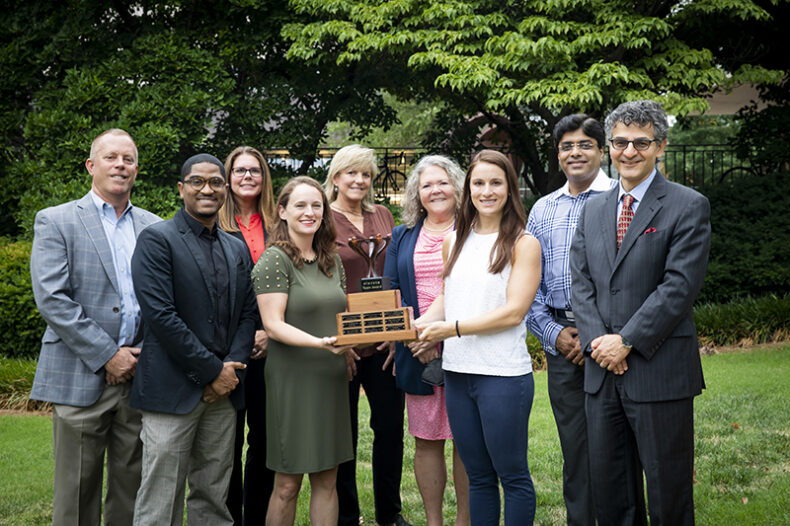
by Kelsey Herbers
Emergencies aren’t restricted to daytime hours, and real-time interpretation of radiographic images can be crucial when determining the best treatment for critical patients.
To meet this need, Vanderbilt University Medical Center’s Department of Radiology and Radiological Sciences employs six full-time emergency radiology “nighthawks” — housed directly within the Emergency Department (ED) — who provide continuous coverage for Vanderbilt University Adult Hospital and Monroe Carell Jr. Children’s Hospital at Vanderbilt.
By working around the clock, the team can review and assess radiographs and computed tomography (CT) scans, consult with colleagues from Emergency Medicine, Trauma and other areas within the Medical Center, and train residents and fellows in caring for some of VUMC’s sickest and most critically injured patients as soon as they come through the doors.
According to Jake Block, MD, chief of the Section of Musculoskeletal and Emergency Radiology, only about half of major academic medical centers across the country employ continuous attending radiologist coverage overnight, with many relying on radiology residents alone to produce preliminary reports.
Those reports are then reviewed and finalized by attending physicians the next morning, often requiring alterations to the care plans developed overnight.
Centers that do employ overnight attending physicians tend to do so at a minimal staffing level, often with off-site coverage.
“We’ve taken a different approach,” said Block. “We have opted to support and embrace the large volume of emergency radiology that occurs after hours by assembling a highly talented group of radiologists and creating a sustainable staffing level to manage the workload. We now have no less than two attending physicians working every night.”
Vanderbilt’s overnight imaging services were launched in 2000 in response to growing activity within Vanderbilt’s ED. At the time, only two attending physicians were involved in the program.
The team now comprises six members: William Walton, MD; Daniel Dunnavant, MD; Joel Benveniste, MD; Nam Le, MD; Laveil Allen, MD; and Kevin Diehl, DO.
“Having real-time expert interpretation of radiographic studies is important in providing timely and quality patient care,” said Ian Jones, MD, executive medical director for Emergency Services. “Nothing beats walking into the ED reading room and discussing the interpretation with the radiologists as soon as the study images are available.”
Jones noted the ED has seen an increased number of advanced imaging studies as the complexity and acuity of patients presenting to the ED increases.
Imaging studies, such as those performed on stroke and trauma patients, are time-sensitive and require rapid completion to diagnose and initiate treatment.
The program’s unique environment also provides a wealth of training opportunities for medical students, according to Allen, instructor of Radiology and Radiological Sciences, who began his role in the program as a fellow before joining the team full-time in March 2019.
“The nighthawk program consists of many talented radiologists with diverse backgrounds, ages, ethnicities and levels of diagnostic radiology experience. I feel that diversity allows our residents and fellows to benefit tremendously in providing care for a similarly diverse patient population,” said Allen.
Walton, assistant professor of Clinical Radiology and Radiological Sciences, completed overnight shifts during both his residency and fellowship before joining the team permanently in July 2018.
“I felt like I learned the most working overnight calls, and it was where I gained much of my confidence,” said Walton. “At any one time, you may have one radiologist reading a full-body trauma CT, another discussing a CT angiogram of the head and neck with the Neurology team for stroke, and another talking with a sonographer in the Children’s Hospital about an ultrasound for appendicitis. You have to keep your knowledge up-to-date to provide the best patient care.”















